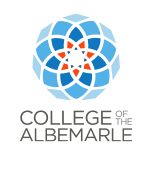Emergency Medical Science — Bridge Program Overview
College of The Albemarle’s (COA) Emergency Medical Science — Bridge program is for qualified applicants who are currently Certified Paramedics in North Carolina or nationally registered, but don’t have a degree.
Upon meeting all requirements and admission to the Emergency Medical Science — Bridge program, you’ll receive 43 hours of proficiency credit toward the Emergency Medical Science Associate in Applied Science (AAS) degree to represent the Emergency Medical Science major hours for Emergency Medical Technician — Paramedic course work that aren’t required as part of the Emergency Medical Science Bridge program.
The Emergency Medical Science curriculum provides individuals with the knowledge, skills and attributes to provide advanced emergency medical care as a paramedic for critical and emergent patients who access the emergency medical system and prepares graduates to enter the workforce.
You’ll gain complex knowledge, competency, and experience while employing evidence based practice under medical oversight, and serve as a link from the scene into the healthcare system.
Graduates of this program may be eligible to take state and/or national certification examinations.
Accreditation Status
The College of The Albemarle Paramedic program has been issued a Letter of Review by the Committee on Accreditation of Educational Programs for the Emergency Medical Services Professions (CoAEMSP).
This letter is NOT a CAAHEP accreditation status; it is a status signifying that a program seeking initial accreditation has demonstrated sufficient compliance with the accreditation standards through the Letter of Review Self Study Report (LSSR) and other documentation.
Letter of Review is recognized by the National Registry of Emergency Medical Technicians (NREMT) for eligibility to take the National Registry’s Paramedic credentialing examination(s). However, it is NOT a guarantee of eventual accreditation.
Paramedic Program Outcomes
| Cohort | Retention Rate | NC Paramedic Exam Pass Rate | Job Placement |
|---|---|---|---|
| 2018 | 41.4% | 100% | 100% |
| 2019 | 60% | 100% | 100% |
| 2020 | 45.5% | 100% | 100% |
| 2021 | 75% | 91.7% | 91.7% |
| 2022 | 77.8% | 100% | 85.7% |
Careers
Employment opportunities include providers of emergency medical services, fire departments, rescue agencies, hospital specialty areas, industry, educational and government agencies.
Student Learning Outcomes
Upon completion of the program, you’ll:
- Apply the basic concepts of pathophysiology, development, and pharmacology to the assessment and management of a wide variety of emergency patients
- Demonstrate proficiency in administration of medications and safely accessing venous circulation
- Establish and/or maintain a patent airway, oxygenate and ventilate any patient
- Demonstrate technical proficiency in all skills necessary to fulfill the role of entry-level paramedic in the state of North Carolina
- Demonstrate proficiency in the role of entry-level paramedic in the state of North Carolina
Emergency Medical Science — Bridge Resources
EMS Bridge Admission Fact Sheet (PDF)
HSWP Admission Comparison Grid (PDF)
Curriculum Guide
Emergency Medical Science Bridge Program Curriculum Guide (PDF)



